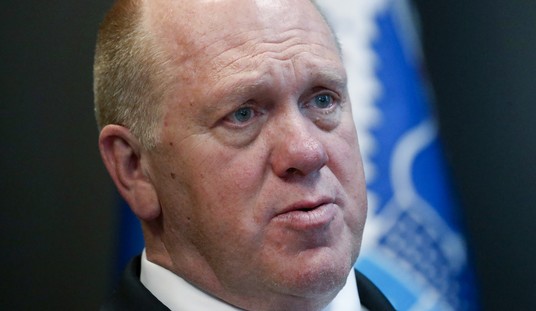In Finding Nemo, a whale helps a clownfish find his son; at SeaWorld, killer whales helped me dismantle PETA’s lies.
Last week, I had the opportunity to tour SeaWorld Orlando behind-the-scenes. I observed how the theme park’s animals are trained and treated. I also learned that SeaWorld has rescued over 25,000 animals.
On my first day, I had the pleasure of meeting four-month-old “Tenacious,” a petite Gentoo penguin, who let me pet her silky head. I also met “Jasper,” a four-year-old female penguin who is so friendly that she has a following of super-fans who regularly seek her out at SeaWorld. I can see why. Without prompting, she waddled over to me, tilted her head up and squawked. “She’s greeting you!” her trainer exclaimed.
PETA has authored 110 press releases to depict SeaWorld as a place where whales go to die. A Beluga whale named Nanuq did recently die at SeaWorld. He was 32 years old, which is roughly the life expectancy of Belugas in the wild.
With the exception of whales that it has rescued, SeaWorld has not removed a whale from the ocean in 35 years. I met 38-year-old “Katina,” a healthy killer whale who is one of the few who were removed from Icelandic waters many years ago. Killer whales were hunted and harvested in Icelandic waters at the time she was removed and that practice has continued to some degree today. Contrary to what PETA may say, removing Katina from the wild arguably lengthened her lifespan. All of her calves have been born at SeaWorld through natural insemination.
Six dolphins leaping in tandem was my favorite part of SeaWorld’s dolphin show. I captured the moment on my camera along with a toddler in the front row—reaching his tiny arm toward the dolphins as if to say: “I want to jump too!” Zoos serve educational and therapeutic purposes for humans, and SeaWorld assumes these roles in a free market manner.
Recommended
After the show, I went back stage and met Kelly Flaherty-Clark, SeaWorld’s Curator of Animal Training and SeaWorld veterinarian Dr. Chris Dold. I observed as four pilot whales—once stranded on a Florida beach and dying from severe dehydration and illness—now twisted and bobbed in their pool, squealing as they played with each other and their water toys.
Flaherty-Clark has spent 28 years with SeaWorld. Her face glows with authentic passion when she tells the story of rescuing the pilot whales when they were washed ashore in two separate strandings in 2011 and 2012. The U.S. government requested SeaWorld Orlando to keep and care for the whales because they were deemed unfit for survival in the ocean.
The scientific community knows very little about pilot whales. SeaWorld is one of the only organizations in the world to care for pilot whales in a zoological setting. Along with their non-profit research partner, Hubbs-SeaWorld Research Institute, SeaWorld will utilize their research to help better understand future mass strandings of pilot whales.
Americans should applaud SeaWorld—a for-profit organization—for raising funds for animal rescue and research independently. Last year, Sen. Tom Coburn (R-OK) created a “Top 5” list of wasteful scientists and he included an $856,000 taxpayer-funded study to train mountain lions to walk on treadmills. Silly as this study may sound, its goal was to develop collars for tracking wild carnivores and deter them from humans. Every ticket purchased at SeaWorld raises money for work that would go undone or be picked up—and in a less efficient manner—by the government.
Activists insist that zoo animals would enjoy better lives in the wild. Which makes you wonder how much time PETA’s disciples actually spend in the ocean. You know, that idyllic body of water where plastic refuse strangles turtles; boat motors grind manatees up like hamburger meat; a plethora of pathogens attack killer whales; and mother dolphins are forced to abandon disabled calves.
You also wonder if PETA’s followers have a penchant for napping through major world events such as the 2004 Indian Ocean tsunami. For instance, post-tsunami, humans trained elephants to help clean up the massive wreckage in Banda Aceh, Indonesia. Wild animals are willing partners in improving the world, but they need us to help train and enrich them instead of ignoring them.
At SeaWorld, many of the “tricks” that whales and dolphins perform are extensions of actions they perform in the wild—like jumping and spy hopping. Several of the learned techniques, including providing voluntary blood and urine samples, allow trainers to provide the whales and dolphins with a higher level of healthcare than they would find in the wild. Blood samples also allow Dr. Dold’s team to gain incredible insights, such as whether a female whale is sick—or simply pregnant.
On my last day, I visited SeaWorld’s resort, Discovery Cove. I swam with a dolphin named Hutch, a strong and gregarious animal who willingly whisked me through the water as if I were as light as cotton candy. Before I left, Hutch’s trainer popped over to ask me if I had enjoyed the day. I had. I asked her how she had become a trainer. It’s “competitive,” she said. “I drove four hours every Saturday to volunteer at Georgia Aquarium [the world’s largest aquarium]. I think that helped SeaWorld see how passionate I was about the animals.”
Like all of SeaWorld’s trainers, she then underwent a rigorous and structured apprenticeship. You see, before they ever touch the animals, rookies spend several years learning and proving their passion: scrubbing tanks, working the 4:30 a.m. fish bucket shift; and mastering animal signals.
When I asked the trainer if she had a response for people who were concerned that the animals’ habitats are too small at SeaWorld she said, “The government has standards for caring for animals and ours are way higher. Everything our dolphins do is voluntary. If the dolphins didn’t enjoy this, I know they wouldn’t willfully come out here [to perform tricks and let people swim with them]. They get as much enrichment out of it as we do. Sometimes, a dolphin will decide [mid-show] that he wants to swim off, and that’s fine. I’ll let him go and call on another dolphin. We only use positive reinforcement. It’s all about the animals.”
She smiled as she looked out over the glistening blue waters where the dolphins dipped and dived: “They have a pretty good life here.”
When PETA gets you down, “just keep swimming,” as they say in Finding Nemo. Eventually, you’ll end up at SeaWorld: petting penguins; swimming with dolphins; and supporting one of the world’s most successful animal rescue and rehabilitation teams.

























Join the conversation as a VIP Member